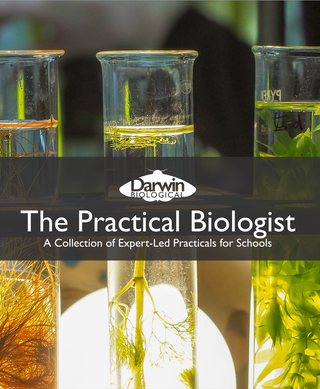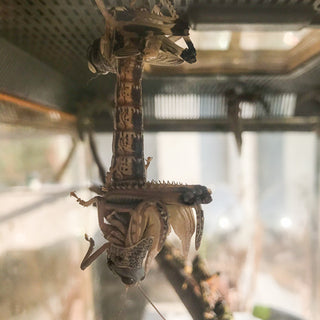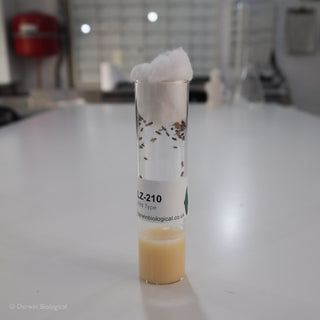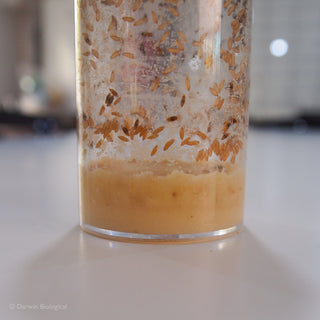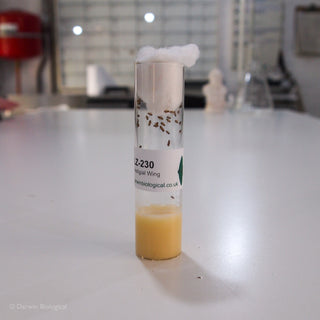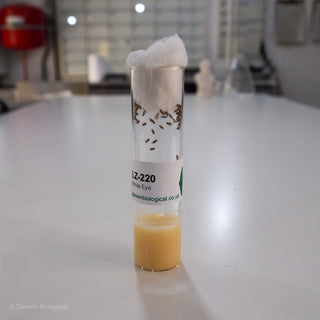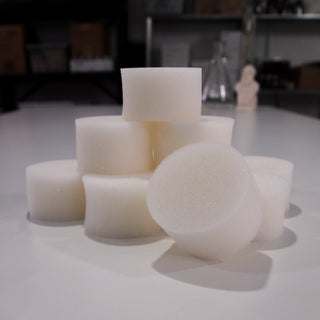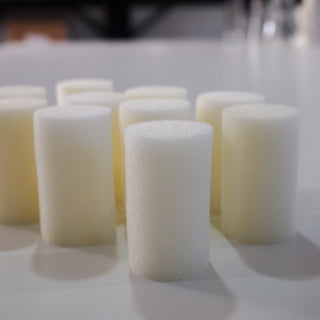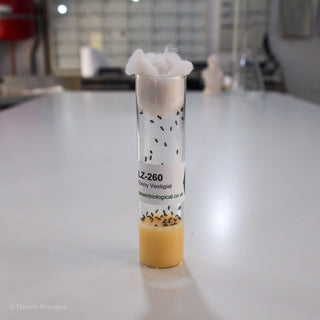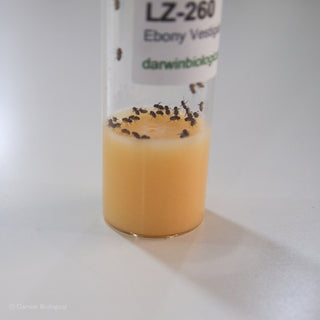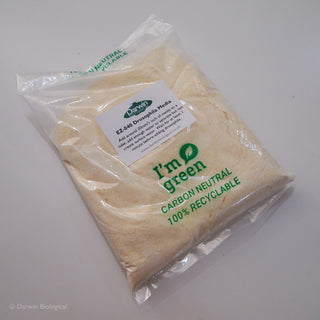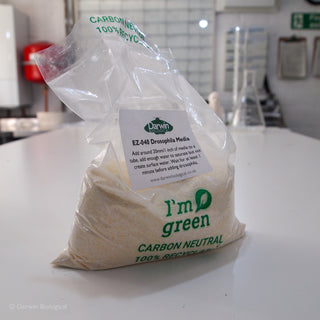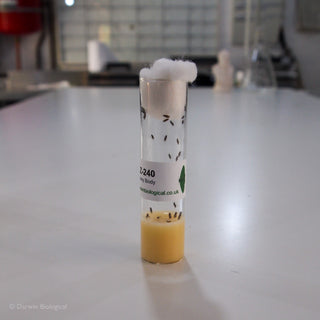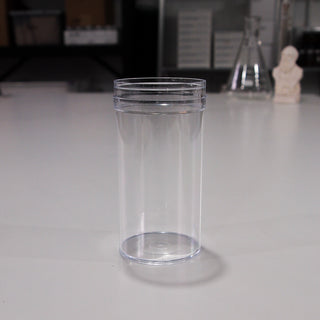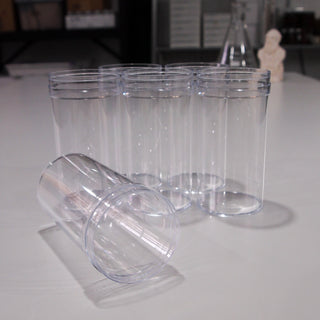All living creatures should be treated with care and respect, handled carefully and kept in a suitable manner.
Why study locusts in schools?
Locusts are a great insect for students to study and dissect as they go through an incomplete metamorphosis as they change from hoppers to adult locusts with wings. They go through 5 instars, or stages, shedding their skin as they grow.
Not only are the live locusts fascinating but locust dissection allows students to fully understand the locust respiratory system including air sacs, spiracles and trachea. To euthanise, see section further down this post, alternatively you can buy preserved locusts.
Where to keep locusts?
The easiest way to keep locusts is using a readymade plastic vivarium available cheaply online. They do not need any ‘bedding’ and keeping the base of the tank clear will help you keep it clean. Put a dry stick in the tank for the locusts to climb and fledge on.
What temperature should locusts be kept at?
Ideally keep locusts between 30-32° during the day and 26-28°C overnight. Heat mats and heat lamps can be purchased from online reptile stores as can simple vivariums. If you struggle to maintain these temperatures locusts will be fine at a constant 27°C, however their development may be slowed.
What do locusts eat?
Locusts need to be fed daily with ‘leafy greens’ such as cabbage, grass, broccoli leaves etc. In addition, provide a small dish (such as a petri dish or jam jar lid) filled with bran and one with moist cotton wool. Each day remove any waste (including shed skin) and uneaten food then replenish food/water. Any dead locusts must be removed immediately to avoid the spread of disease.
How to breed locusts?
Once the adults have reached maturity they will begin mating, it is only at this point that suitable laying media should be provided.
First obtain a 4” tall jam jar and fill with silver sand up to the top. Pour this sand into an old saucepan and repeatedly wash the sand under the tap until the water runs clear, it usually takes 3 or 4 washes. Once the sand is clean place the pan on the hob or boiling ring and heat the sand until dry, stirring occasionally. The sand will be very hot so ensure no one touches either it or the pan during this process. Allow the now sterile sand to cool naturally.
Once cool, weigh the sand and add 15% in weight of water, for example if the sand weighs 100g add 15g of water. Mix thoroughly and then using a teaspoon transfer this damp sand into the jam jar. Do not compact the sand, but equally ensure there are no large air gaps. Sprinkling the sand in and tapping the jar can help achieve this. Fill the sand to the very top of the jar, you will have some left over.
Place the jar in with the sexually mature adults, you will know once an egg pod has been laid as there will be a white foam ‘plug’. Females can spend a long time laying so it is likely you will see the pod laid.
Once you are sure you have a pod laid remove the jar from the tank. Tap it lightly its side to remove the top 1-2cm of sand – the pods will now be protruding. Punch a few small holes in the jar lid (a dissecting needle works well) and screw onto the jar. Place this jar somewhere warm (around 28°C) and write the date(s) you believe the eggs were laid. Each locust pod will contain between 50 and 100 eggs.
The time for locust eggs to hatch will vary depending on temperature but 10-14 days is normal. From day 9 onwards check at least daily for the presence of nymphs or ‘hoppers’, remove the lid to air the sand periodically (if no hoppers). Once your eggs have begun hatching place the jar in a clean tank, (always disinfect using bleach before/after use) and add a dish of water and a dish of bran as well as some leafy greens. Before removing the jam jar lid ensure that the tank is escape-proof, you may need to use a piece of fine mesh, tissue paper or muslin. Remove the jam jar lid and quickly seal the tank, the hoppers will now live up to their name!
Provided you have left them plenty of food and water you will not need to reopen the tank for a few days – at this point remove the jar of sand and discard the contents, the sand cannot be reused. Whilst the hoppers are in their first instar it is best to limit the number of times you have to open the tank. Once they are large enough, remove any mesh/muslin. And voila, you have successfully bred locusts!
How to euthanise or kill locusts?
As locusts are non-native it is illegal to release them into the wild, instead euthanise humanely by placing in a freezer for 24hrs then decapitating or exposing to Diethyl ether (in an airtight tub) for around 8 hours to ensure death.
How to preserve locusts?
To preserve locusts for dissection at a later date, submerge them in a preserving fluid comprising 70% alcohol, 25% water and 5% glycerol. Over time the liquid will discolour, at this point decant locusts into to fresh preservative.
Ready to purchase locusts? Click here!
Any questions? Please contact us.

